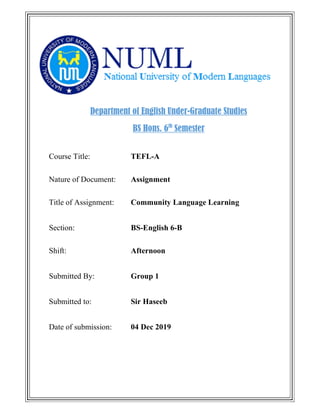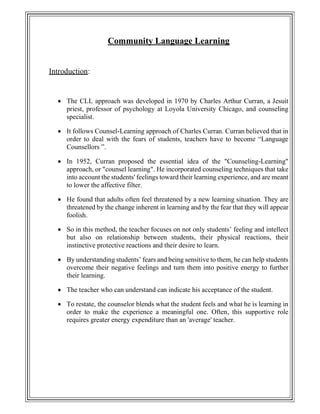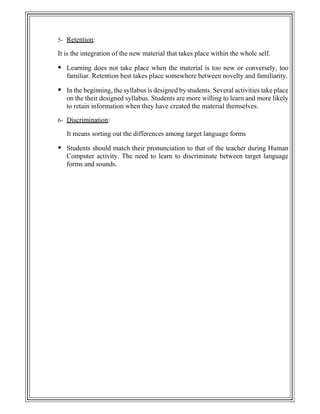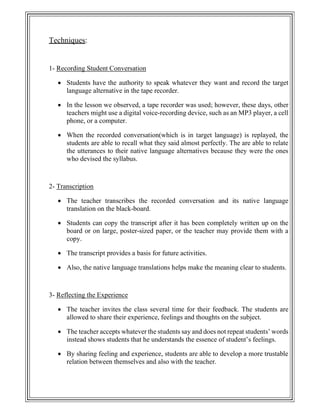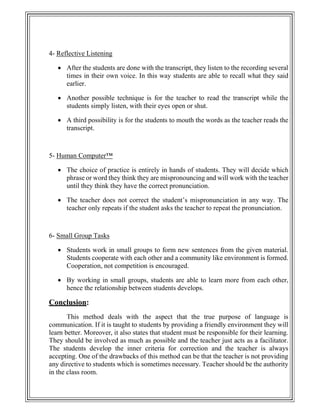1) The Community Language Learning method focuses on creating a secure environment where students' feelings are respected and they can take risks in learning a new language.
2) The teacher acts as a language counselor, translating students' words and building relationships to help lower anxiety. Students' conversations are recorded and transcribed for analysis.
3) Throughout the lesson, feedback is gathered from students and their perspectives are valued to continually improve the learning process. Various techniques keep students actively engaged, including role playing, group work, and reflective listening activities.
